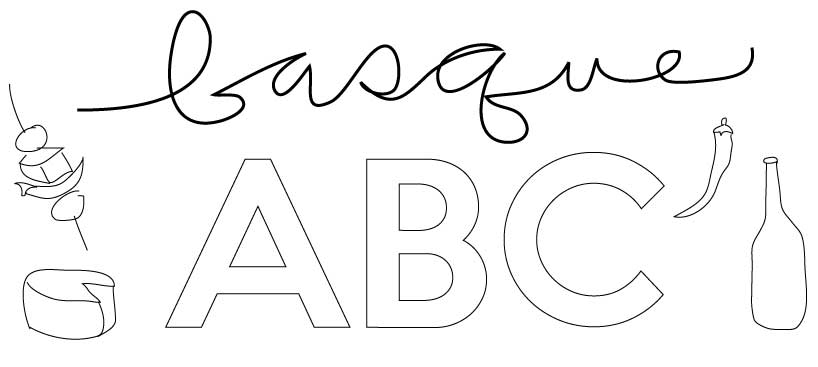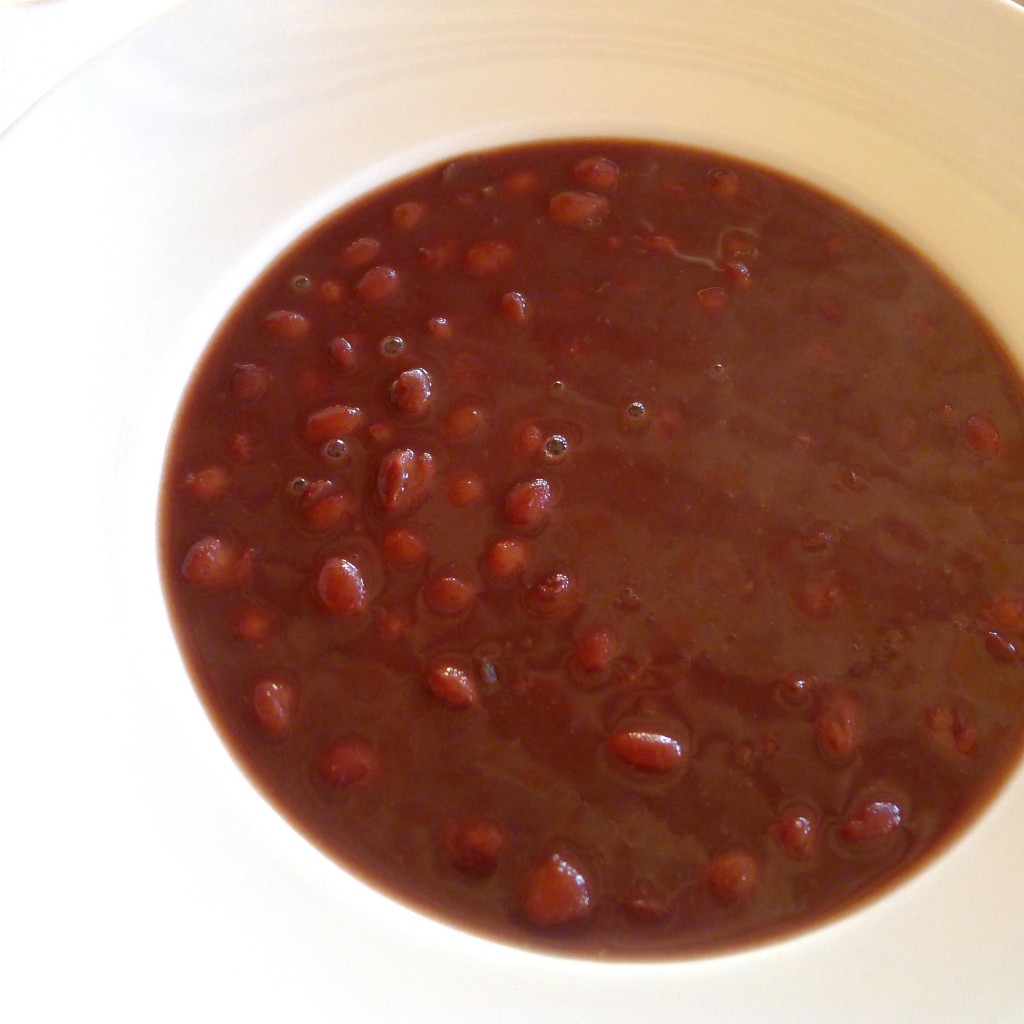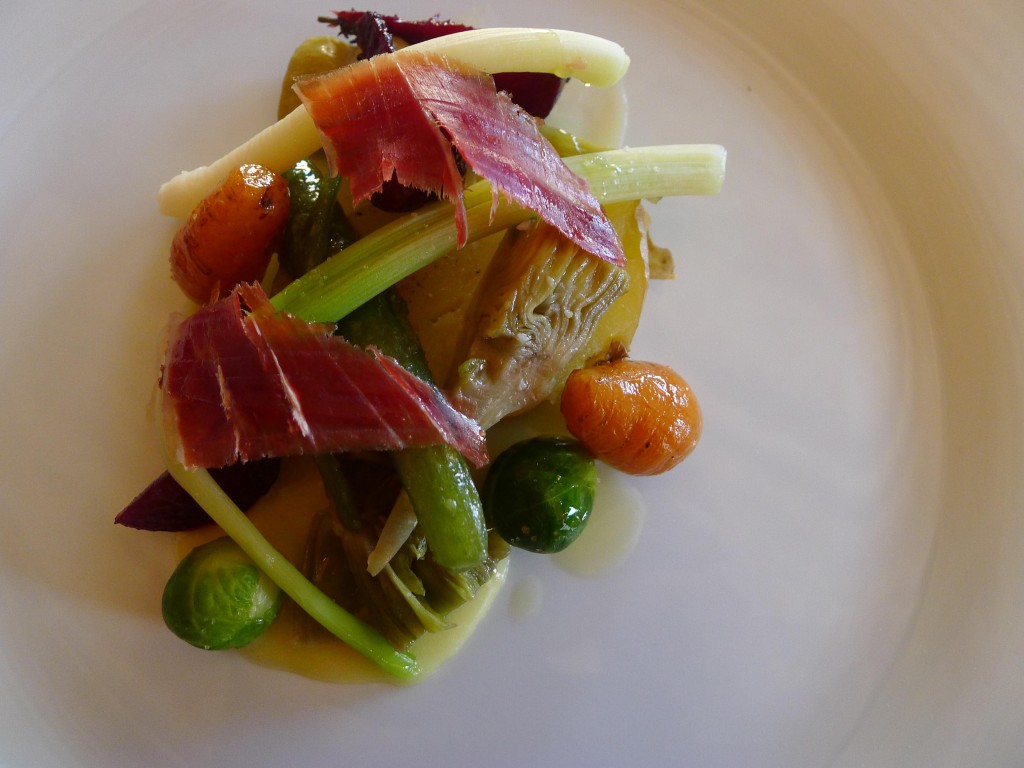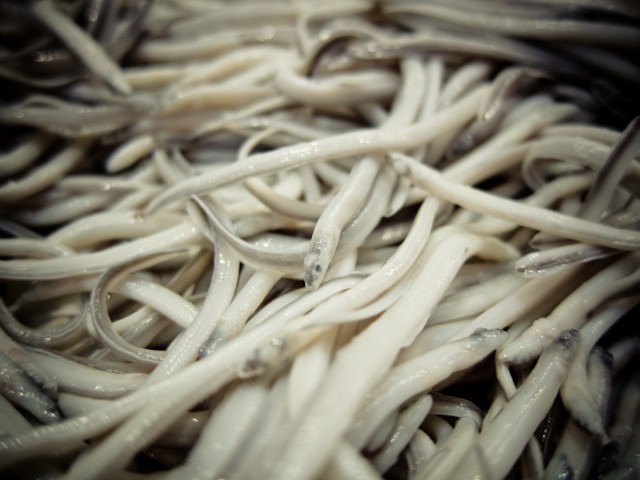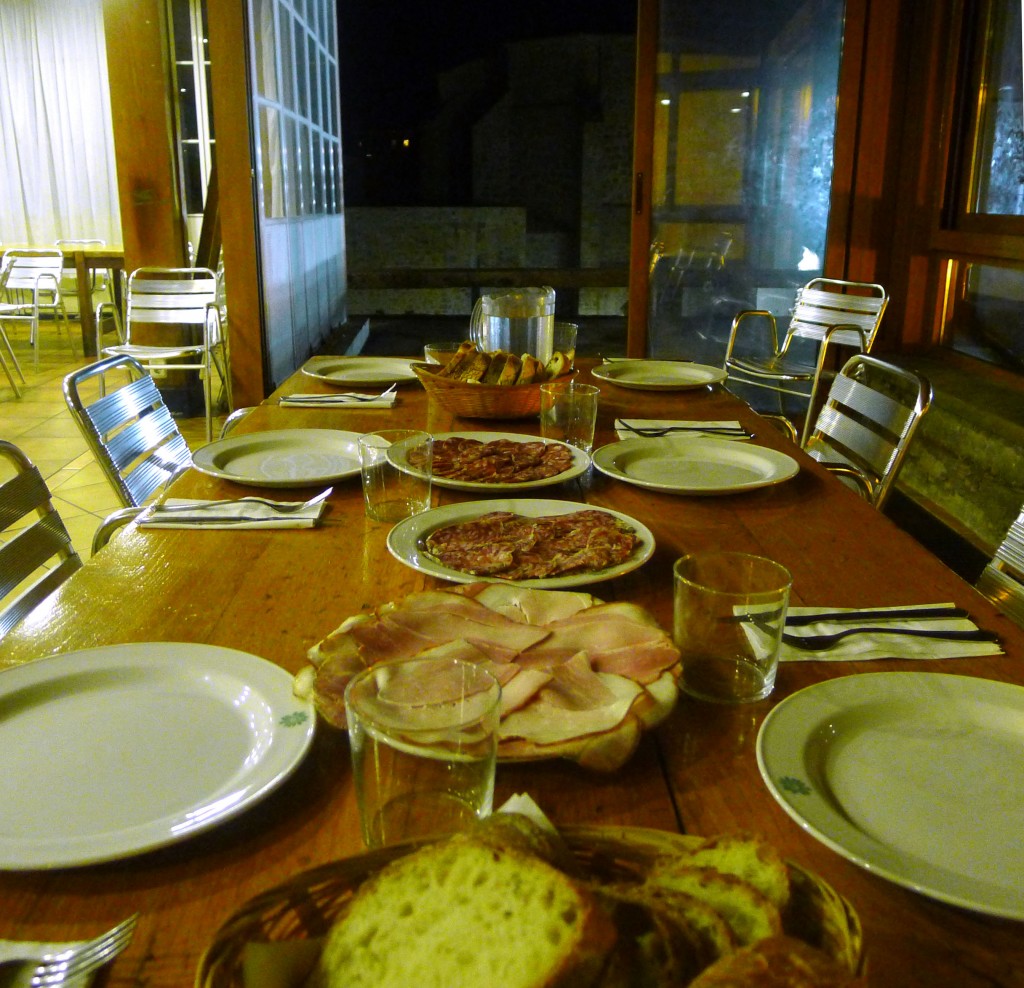
Cider season is nearing a close here in Basque Country.
Basque cider is a drink in its own category. It’s not quite French cider, it’s nothing like American…and it’s a seasonal beverage, best enjoyed in the same building in which it is made, the ciderhouse.
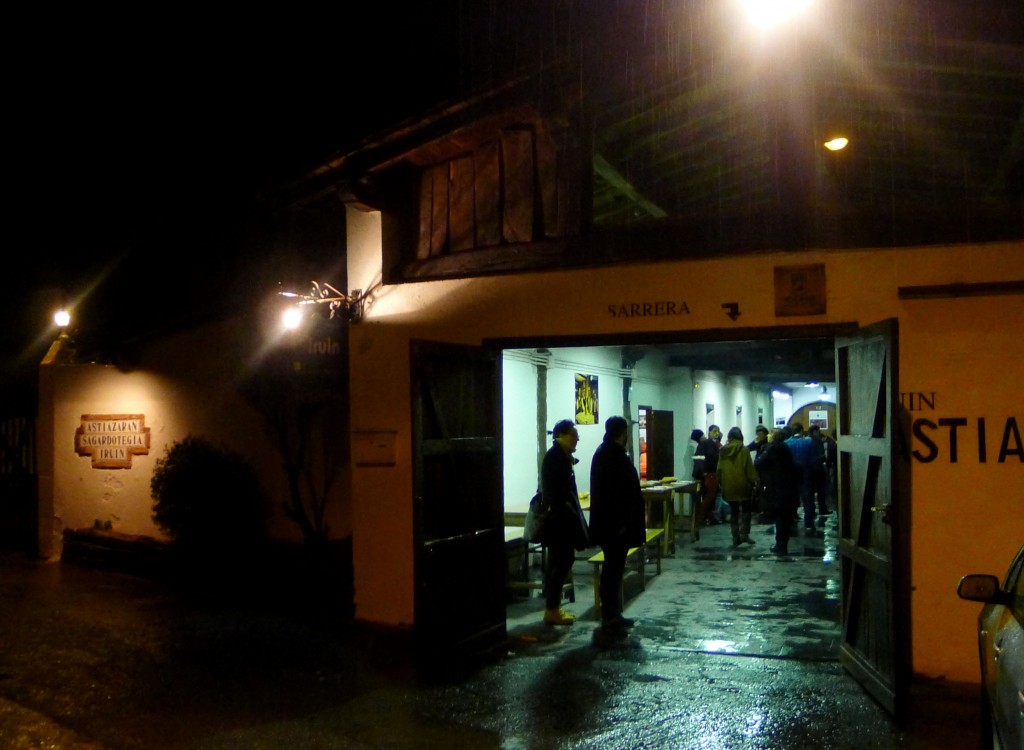
There are a few rules that can help an outsider enjoy the ciderhouse experience as much as a local. It’s much more difficult to have a bad time in a place where steaks are sizzling and cider is flowing from wooden barrels, but there is a method behind that madness. Here are some cider house rules:
- Is it May? Anytime between June and November? Please, don’t go to a ciderhouse. Unless you are looking for a Disney version of this hallowed tradition.
- Reserve ahead because during the season the smaller (read, more local) ciderhouses tend to fill up.
- Go in a group. With cider, the more the merrier, in all senses of the word.
- Wear a sweater. It’s cold in the rooms where cider is kept in huge wooden barrels.
- Come hungry. Four courses include tortilla, cod, steak and traditional dessert of membrillo, cheese and walnuts.
- The sound TXOTX! (phonetically, choch) means please head directly to the barrel room.
- When taking cider from the barrels, line up directly behind the person ahead of you. Align your glass with theirs, such that when they step away, the cider streams directly into your glass.
- Get a little bit of cider at a time. Down it. Get more. Repeat, a LOT.
- Most importantly, have fun.
- Night should end in song.
Gosh, I love this place.

